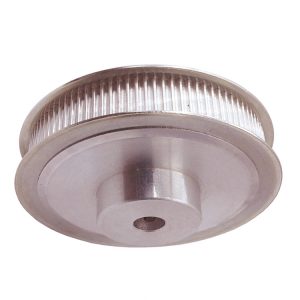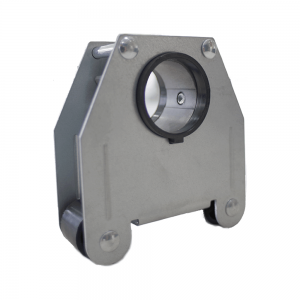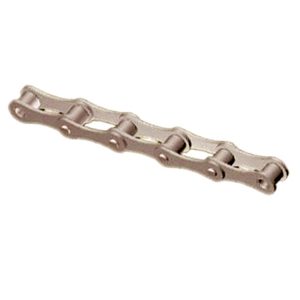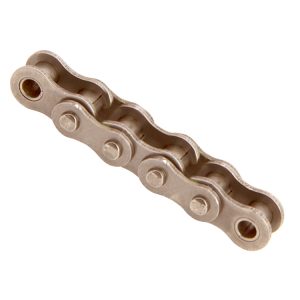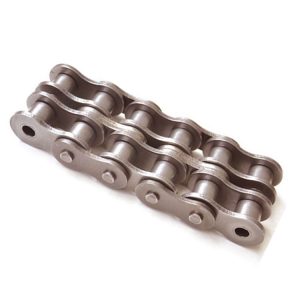Product Description
European Standard SPA CHINAMFG Spc Spz Taper Bush Cast Iron V Belt Pulley
At HangZhou CHINAMFG Industry Co., Ltd., we are proud to supply a wide range of V Belt Pulleys that are perfect for various industrial applications. Our V Belt Pulleys are designed to meet European and American standards, ensuring compatibility and reliability.
European Standard:
- V-belt pulleys for taper bushings: SPZ, SPA, SPB, SPC; Up to 10 grooves
- Adjustable speed V-belt pulleys and variable speed pulleys
- Flat belt pulleys and conveyor belt pulleys
American Standard:
- Sheaves for taper bushings: 3V, 5V, 8V
- Sheaves for QD bushings: 3V, 5V, 8V
- Sheaves for split taper bushings: 3V, 5V, 8V
- Sheaves for 3L, 4L or A, and 5L or B belts: AK, AKH, 2AK, 2AKH, BK, BKH, 2BK, 2BKH, 3BK
- Adjustable sheaves: Poly V-pulley, multi-pitch H, L, J, K and M
Key Features:
- Bore options: Pilot bore, finished bore, taper bore, bore for QD bushing
- Surface finish options: Paint, phosphating, zinc plated
- Material options: Cast iron, ductile iron, nylon, aluminum
- Customizable: Made according to drawings and/or samples
- OEM inquiries welcomed
Our V Belt Pulleys are manufactured with precision and durability in mind. They are designed to provide efficient power transmission and long-lasting performance. Whether you need a V-belt pulley for taper bushings, adjustable speed pulleys, or sheaves for various belt types, we have the solution for you.
Trust HangZhou CHINAMFG Industry Co., Ltd. for all your V Belt Pulley needs. Contact us today for more information or to place an order.
|
Description |
P |
O |
Grooves |
N |
L |
D |
B |
Type |
d |
| SPA40 | 40 |
45.5 |
1 |
40 |
35 |
|
20 |
1 |
10 |
|
SPA50 |
50 |
55.5 |
1 2 |
40 40 |
35 45 |
|
20 35 |
1 1 |
10 10 |
|
SPA60 |
60 |
65.5 |
1 2 3 |
40 40 |
35 45 |
|
20 35 50 |
1 1 7 |
10 10 10 |
|
SPA71 |
71 |
76.5 |
1 2 3 |
40 50 52 |
40 45 52 |
|
20 35 50 |
1 1 1 |
10 10 10 |
|
SPA75 |
75 |
80.5 |
1 2 3 4 5 |
40 50 |
40 45 |
|
20 35 50 65 80 |
1 1 7 7 7
|
10 10 10 10 10 |
|
SPA80 |
80 |
85.5 |
1 2 3 4 5 |
45 50 |
40 45 |
|
20 35 50 65 80 |
1 1 7 7 7 |
10 10 15 15 15 |
|
SPA85 |
85 |
90.5 |
1 2 3 4 5 |
45 50 |
40 45 |
|
20 35 50 65 80 |
1 1 7 7 7 |
10 10 15 15 15 |
|
SPA90 |
90 |
95.5 |
1 2 3 4 5 |
45 60 |
40 45 |
|
20 35 50 65 80 |
1 1 7 7 7 |
10 15 15 15 15 |
|
SPA95 |
95 |
100.5 |
1 2 3 4 5 |
45 60 |
40 45 |
|
20 35 50 65 80 |
1 1 7 7 7 |
10 15 15 15 15 |
|
SPA100 |
100 |
105.5 |
1 2 3 4 5 |
48 60 |
40 45
52 52 |
67 67 |
20 35 50 65 80
|
1 1 7 7 7 |
10 15 15 15 15 |
|
SPA106 |
106 |
111.5 |
1 2 |
48 60 |
40 45 |
|
20 35 |
1 1 |
10 15 |
|
SPA112 |
112 |
117.5 |
1 2 3 4 5 |
48 60 |
40 45
52 52 |
79 79 |
20 35 60 65 80 |
1 1 7 2 2 |
10 15 15 15 15 |
|
SPA118 |
118 |
123.5 |
1 2 3 4 5 |
60 60 |
40 45
52 52 |
87 87 |
20 35 50 65 80 |
1 1 7 2 2 |
15 15 15 15 15 |
|
Description |
P |
O |
Grooves |
N |
L |
D |
B |
Type |
d |
|
SPB70 |
70 |
77 |
1 2 |
45 45 |
45 48 |
|
25 44 |
1 1 |
10 10 |
|
SPB80 |
80 |
87 |
1 2 3 4 5 |
50 50 |
45 48 |
|
25 44 63 82 101 |
1 1 7 7 7 |
10 10 15 15 15 |
|
SPB90 |
90 |
97 |
1 2 3 4 5 |
50 50 |
45 49 |
|
25 44 63 82 101 |
1 1 7 7 7 |
10 10 15 15 15 |
|
SPB100 |
100 |
107 |
1 2 3 4 5 |
52 55 |
45 55 |
|
25 44 63 82 101 |
1 1 7 7 7 |
10 15 15 15 15 |
|
SPB112 |
112 |
119 |
1 2 3 4 5 |
55 60 |
45 55 |
|
25 44 63 82 101 |
1 1 7 7 7 |
15 15 15 20 20 |
|
SPB120 |
120 |
127 |
1 2 3 4 5 6 |
55 60 |
45 55 |
|
25 44 63 82 101 120 |
1 1 7 7 7 7 |
15 15 15 20 20 20 |
|
SPB125 |
125 |
132 |
1 2 3 4 5 6 |
58 60 |
45 55 60 60 60 60 |
83 83 83 83 |
25 44 63 82 101 120 |
1 1 2 2 2 2 |
15 15 15 20 20 20 |
|
SPB132 |
132 |
139 |
1 2 3 4 5 6 |
60 60 |
45 55 60 60 60 60 |
88 88 88 88 |
25 44 63 82 101 120 |
1 1 2 2 2 2 |
15 15 15 20 20 20 |
|
SPB140 |
140 |
147 |
1 2 3 4 5 6 |
65 65 |
45 55 60 60 60 60 |
98 98 98 98 |
25 44 63 82 101 120 |
1 1 2 2 2 2 |
20 20 20 20 20 20 |
|
SPB150 |
150 |
157 |
1 2 3 4 5 6 |
65 65 |
45 55 60 60 60 60 |
108 108 108 108 |
25 44 63 82 101 120 |
1 1 2 2 2 2 |
20 20 20 20 20 20 |
|
Description |
P |
O |
Grooves |
N |
L |
D |
B |
Type |
d |
|
SPC100 |
100 |
109.6 |
1 |
60 |
50 |
|
34 |
1 |
15 |
|
SPC120 |
120 |
129.6 |
1 2 |
65 |
50 |
|
34 59.5 |
1 7 |
15 15 |
|
SPC140 |
140 |
149.6 |
1 2 3 4 |
70 |
50
65 80 |
83 83 |
34 59.5 85 110.5 |
1 7 2 2 |
20 20 20 20 |
|
SPC150 |
150 |
159.6 |
1 2 3 4 5 |
70
|
50
65 80 96 |
93 93 93 |
34 59.6 85 110.5 136 |
1 7 2 2 2 |
20 20 20 20 20 |
|
SPC160 |
160 |
169.6 |
1 2 3 4 5 6 |
72 |
50
65 80 96 96 |
103 103 103 103 |
34 59.5 85 110.5 136 161.5 |
1 7 2 2 2 2 |
20 20 20 20 20 20 |
|
SPC180 |
180 |
189.6 |
1 2 3 4 5 6 |
76 80 82 82 82 82 |
50 60 65 80 96 96 |
123 123 123 123 123 123 |
34 59.5 85 110.5 136 161.5 |
3 8 4 4 4 4 |
20 20 20 20 20 20 |
|
SPC200 |
200 |
209.6 |
1 2 3 4 5 6 |
76 80 86 90 90 90 |
50 60 65 90 100 100 |
143 143 143 143 143 143 |
34 59.5 85 110.5 136 161.5 |
3 3 4 4 4 4 |
20 20 20 20 25 25 |
|
SPC225 |
225 |
234.6 |
1 2 3 4 5 6 |
86 88 90 90 90 90 |
50 60 70 90 100 100 |
168 168 168 168 168 168 |
34 59.5 85 110.5 136 161.5 |
3 3 4 4 4 4 |
20 20 20 25 25 25 |
|
SPC250 |
250 |
259.6 |
1 2 3 4 5 6 |
86 92 92 100 102 102 |
50 60 70 90 100 100 |
193 193 193 193 193 193 |
34 59.5 85 110.5 136 161.5 |
3 3 4 4 4 4 |
20 20 20 25 25 25 |
|
SPC280 |
280 |
289.6 |
1 2 3 4 5 6 |
86 92 92 100 102 102 |
50 60 70 90 100 100 |
223 223 223 223 223 223 |
34 59.5 85 110.5 136 161.5 |
3 3 4 4 4 4 |
20 20 20 25 25 25 |
|
SPC300 |
300 |
309.6 |
1 2 3 4 5 6 |
86 92 92 100 104 104 |
50 60 70 90 100 100 |
243 243 243 243 243 243 |
34 59.5 85 110.5 136 161.5 |
3 3 4 4 4 4 |
20 20 20 25 25 25 |
HangZhou CHINAMFG Industry Co., Ltd.
HangZhou CHINAMFG Industry Co., Ltd. specializes in providing a wide range of high-quality products to meet your needs. Our product line includes chains, sprockets, gears, gear racks, v belt pulleys, timing pulleys, V-belts, couplings, machined parts, and more.
With our commitment to excellent service, understanding of your requirements, and a strong sense of responsibility, we have gained the trust of buyers worldwide. Our extensive experience in working with international customers has allowed us to establish a strong presence in the American, European, South American, and Asian markets.
All our products are manufactured using modern computerized machinery and equipment. We adhere to high-quality standards and comply with international advanced criteria. Our years of experience in this industry have positioned us as a trusted supplier, offering competitive prices, on-time delivery, prompt response, on-hand engineering support, and reliable after-sales services.
Furthermore, we maintain ISO9001 compliance in all our production procedures. We are also capable of designing and producing non-standard products to meet your specific requirements. At HangZhou CHINAMFG Industry Co., Ltd., we prioritize quality and credit, ensuring that we provide the best services and high-quality products with utmost sincerity.
If you need any information or samples, please don’t hesitate to contact us. We assure you of a prompt response.
/* January 22, 2571 19:08:37 */!function(){function s(e,r){var a,o={};try{e&&e.split(“,”).forEach(function(e,t){e&&(a=e.match(/(.*?):(.*)$/))&&1
| Certification: | CE |
|---|---|
| Pulley Sizes: | SPA Spb Spc Spz |
| Manufacturing Process: | Casting |
| Material: | Carbon Steel |
| Surface Treatment: | Oxygenation |
| Application: | Chemical Industry, Mining Transport |
| Customization: |
Available
| Customized Request |
|---|
How do pulleys function in various types of vehicles and machinery?
Pulleys play crucial roles in numerous types of vehicles and machinery, enabling the transmission of power, control of mechanical systems, and efficient operation. Here’s how pulleys function in various applications:
1. Automotive Engines: In vehicles, pulleys are commonly used in the engine’s accessory drive system. The crankshaft pulley, also known as the harmonic balancer, is connected to the engine’s crankshaft and drives various accessories such as the alternator, power steering pump, and air conditioning compressor. The pulleys enable the transfer of rotational power from the engine to these accessories, allowing them to perform their respective functions.
2. Belt-Driven Systems: Pulleys are extensively used in belt-driven systems across various machinery and equipment. These systems utilize belts, such as V-belts or timing belts, which wrap around pulleys to transfer power. Examples include conveyor systems, industrial machinery, agricultural equipment, and HVAC systems. The pulleys provide the necessary grip and tension to ensure efficient power transmission and drive system operation.
3. Cranes and Hoists: Pulleys are integral components of cranes and hoists, enabling the lifting and movement of heavy loads. Multiple pulleys, often arranged in a block and tackle configuration, are used to create mechanical advantage, reducing the effort required to lift the load. By distributing the load’s weight over multiple strands of rope or cable, pulleys allow for controlled lifting and precise positioning of objects.
4. Construction Equipment: Pulleys are found in various types of construction machinery. For example, in excavators and cranes, pulleys are used in the wire rope systems for lifting and lowering the boom, bucket, or other attachments. Pulleys help in managing the forces involved in these operations, providing smooth and controlled movement.
5. Elevators: Pulleys are essential components in elevator systems. Elevator cars are suspended by steel cables that run over pulleys. These pulleys are connected to an electric motor through a system of gears and sheaves. As the motor rotates the pulleys, the elevator car moves up or down. Pulleys in elevator systems help in efficiently transferring power and maintaining the stability and safety of vertical transportation.
6. Exercise Equipment: Pulleys are widely used in exercise machines and gym equipment to provide resistance and enable adjustable resistance levels. By incorporating pulley systems with different configurations and cable arrangements, exercise equipment can offer a variety of exercises targeting specific muscle groups.
7. Marine Applications: Pulleys are utilized in various marine applications, such as sailboats and winches. Pulleys help in controlling the movement and tension of ropes and cables, enabling sail adjustments, mast raising and lowering, and other rigging operations.
8. Garage Doors: Pulleys are employed in garage door mechanisms to facilitate the smooth opening and closing of the doors. They are used in conjunction with cables or belts, allowing for the transfer of force from the door opener to the door itself.
These examples demonstrate the versatility and importance of pulleys in a wide range of vehicles and machinery. By utilizing pulleys, these systems can achieve efficient power transmission, mechanical advantage, controlled movement, and improved functionality.
How are pulleys used in manufacturing processes and assembly lines?
Pulleys play a crucial role in manufacturing processes and assembly lines, facilitating the movement of materials, components, and products. They are utilized in various ways to enhance efficiency, increase productivity, and streamline production. Here’s how pulleys are commonly used in manufacturing processes and assembly lines:
1. Conveyor Systems:
Pulleys are extensively employed in conveyor systems, which are integral to manufacturing and assembly lines. Conveyor belts or chains run over pulleys at different points along the line, transporting materials or products from one workstation to another. The pulleys help guide and support the conveyor belts or chains, ensuring smooth and controlled movement. By utilizing pulleys of different sizes or configurations, conveyor systems can be designed to accommodate various layouts, inclines, or speed requirements.
2. Material Handling:
Pulleys are used to facilitate the lifting, lowering, and movement of materials in manufacturing processes. Cranes, hoists, and lifting equipment often incorporate pulley systems to provide mechanical advantage and precise control over heavy loads. The pulleys, along with ropes, cables, or chains, allow operators to lift and position materials with minimal effort and improved safety.
3. Assembly Line Automation:
In automated manufacturing and assembly lines, pulleys are utilized in robotic systems to control the movement of robotic arms. The pulleys are incorporated into the mechanism that guides the cables or belts connected to the robotic arms. By adjusting the position and tension of the pulleys, precise and coordinated movements can be achieved, enabling efficient assembly processes.
4. Tensioning and Alignment:
Pulleys are crucial for maintaining proper tension and alignment in manufacturing processes. Tensioning pulleys are used to apply the appropriate tension to belts or chains, ensuring optimal power transmission and preventing slack or slipping. Alignment pulleys are employed to align belts or chains, minimizing wear, reducing vibrations, and prolonging the life of the components.
5. Power Transmission:
Pulleys are central to power transmission in manufacturing processes and assembly lines. They are used in conjunction with belts, chains, or gears to transfer rotational motion and power from one component to another. By selecting pulleys of different sizes or ratios, the speed and torque can be adjusted to suit specific production requirements.
6. Tool and Machine Positioning:
In manufacturing processes, pulleys are often integrated into tool positioning systems or adjustable machine setups. By using pulleys and cables, tools or machine components can be easily repositioned, allowing for quick changeovers or adjustments to accommodate different workpieces or production tasks.
Overall, pulleys are indispensable in manufacturing processes and assembly lines, enabling efficient material handling, precise movement control, proper tensioning and alignment, power transmission, and flexible tool positioning. Their use contributes to increased productivity, improved workflow, and enhanced automation in the manufacturing industry.
What are the advantages of using pulleys for mechanical advantage?
Using pulleys for mechanical advantage offers several advantages in various applications. Here are the key advantages:
1. Increased Lifting Capacity: One of the primary advantages of using pulleys for mechanical advantage is that they allow for the lifting of heavier loads with less effort. By distributing the load over multiple segments of rope or belt, pulleys reduce the amount of force required to lift the load. This is especially beneficial in scenarios where manual lifting or limited power is involved.
2. Easier Load Manipulation: Pulleys make it easier to manipulate and control heavy loads. The mechanical advantage provided by pulleys reduces the force needed to move or lift the load, allowing operators to exert less effort. This makes tasks such as lifting, lowering, and positioning heavy objects more manageable and less physically demanding.
3. Safety and Injury Prevention: By reducing the amount of force required to lift heavy loads, pulleys contribute to improved safety and injury prevention. When operators have to exert less physical effort, the risk of strains, sprains, and other lifting-related injuries is significantly reduced. Pulleys enable controlled and smoother load movement, minimizing the risk of sudden shifts or drops that could cause accidents.
4. Precise Load Positioning: Pulley systems provide precise control over load positioning. By using multiple pulleys and adjusting the tension in the rope or belt, operators can achieve precise vertical and horizontal movements of the load. This level of control is particularly valuable in applications that require accurate placement of heavy objects, such as construction, manufacturing, and material handling.
5. Versatility and Adaptability: Pulleys offer versatility and adaptability in various applications. They can be configured in different arrangements and combinations to achieve specific mechanical advantages based on the requirements of the task or load. Pulleys can be easily integrated into existing systems or incorporated into custom-designed setups, making them highly adaptable to different situations.
6. Efficient Power Transmission: Pulleys provide efficient power transmission in mechanical systems. They enable the transfer of rotational motion and force from one component to another with minimal energy loss. The use of pulleys allows for the optimization of power transmission, ensuring effective utilization of available power sources.
7. Cost-Effectiveness: Using pulleys for mechanical advantage can be cost-effective compared to alternative methods. Pulleys are relatively simple and economical devices that can be readily obtained. They require minimal maintenance and have a long operational lifespan. Additionally, pulley systems can often be designed and implemented without the need for complex and expensive equipment.
In conclusion, using pulleys for mechanical advantage offers advantages such as increased lifting capacity, easier load manipulation, safety and injury prevention, precise load positioning, versatility, efficient power transmission, and cost-effectiveness. These advantages make pulleys a valuable tool in a wide range of industries and applications.
editor by CX
2024-04-04










